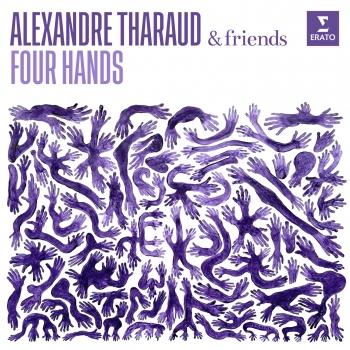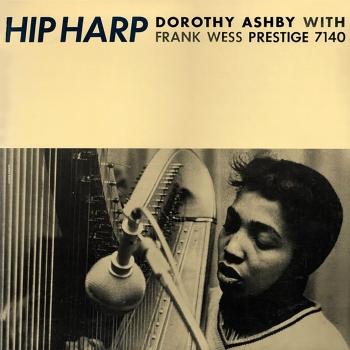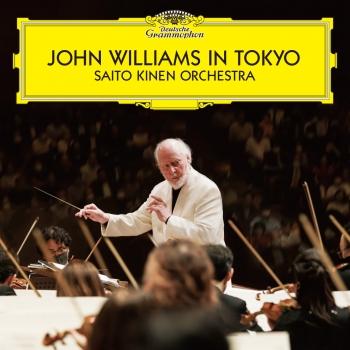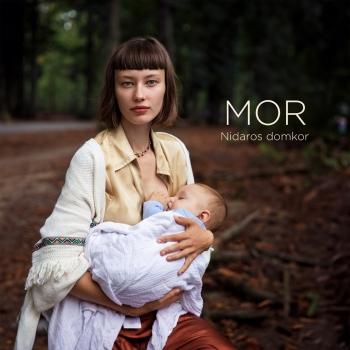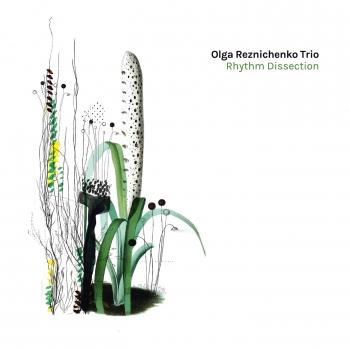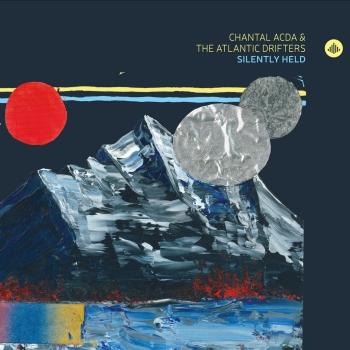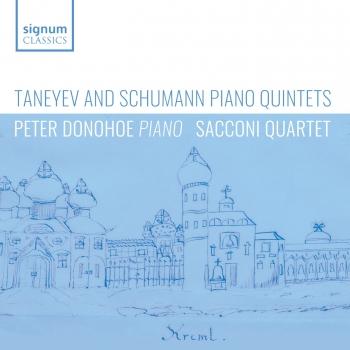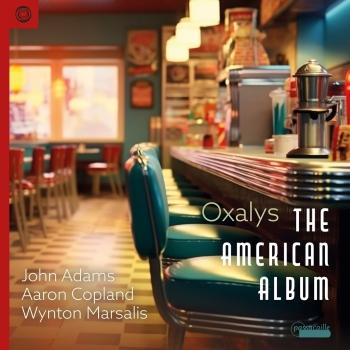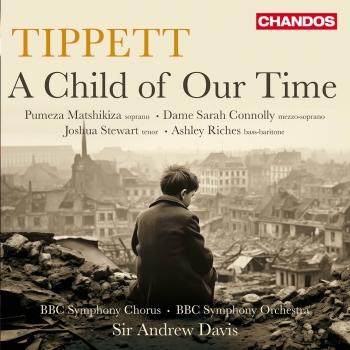
Agostino Steffani: Duetti da Camera - Crudo Amor Forma Antiqva & Aarón Zapico
Album info
Album-Release:
2016
HRA-Release:
17.02.2016
Label: Winter & Winter
Genre: Classical
Subgenre: Chamber Music
Artist: Forma Antiqva & Aarón Zapico, Carlos Mena & Eugenia Boix
Composer: Agostino Steffani (1654-1728)
Album including Album cover Booklet (PDF)
I`m sorry!
Dear HIGHRESAUDIO Visitor,
due to territorial constraints and also different releases dates in each country you currently can`t purchase this album. We are updating our release dates twice a week. So, please feel free to check from time-to-time, if the album is available for your country.
We suggest, that you bookmark the album and use our Short List function.
Thank you for your understanding and patience.
Yours sincerely, HIGHRESAUDIO
- Agostino Steffani (1654-1728): Begl'occhi, oh Dio, non piú piangete
- 1Begl'occhi, oh Dio, non piú piangete02:23
- 2Begl'occhi, oh Dio, non piú piangete (Clori mia, s'il cor t'ingombra)02:22
- 3Begl'occhi, oh Dio, non piú piangete (Se la tua gelosia)01:14
- 4Begl'occhi, oh Dio, non piú piangete (Clori mia, deh, ferma alquanto)02:22
- Occhi, Perché piangete?
- 5Occhi, Perché piangete?06:50
- Giovanni Girolamo Kapsperger (c.1580-1651): Libro Terzo d'intavolatura di chitarrone
- 6Toccata Terza from Libro Terzo d'intavolatura di chitarrone03:38
- Steffani: Dimmi, dimmi, Cupido
- 7Dimmi, dimmi, Cupido01:27
- 8Steffani: Dimmi, dimmi, Cupido (Son erede dei tormanti)02:37
- 9Dimmi, dimmi, Cupido (Ah, che quei piedi, oh Dio)02:01
- 10Dimmi, dimmi, Cupido (Non bastava al Dio d'amore)02:19
- Johann Caspar Ferdinand Fischer (c.1656-1746): Musikalischer Parnassus
- 11Passacaglia from Musikalischer Parnassus04:45
- Steffani: Crudo amor, morir Mi sento
- 12Crudo amor, morir Mi sento02:05
- 13Crudo amor (Come nel mar d'amore)01:34
- 14Crudo amor (La stella ch'a me splende)03:00
- 15Crudo amor (È la speme un falso bene)02:45
- Placidissime catene
- 16Placidissime catene06:45
- Francesco Corbetta (c1615 – 1681): Passachaglia from Varii scherzi di sonate per la chitara spagnola, Libro Qvarto
- 17Passachaglia from Varii scherzi di sonate per la chitara spagnola, Libro Qvarto03:35
- Steffani: Sol negl'occhi del mio bene
- 18Sol negl'occhi del mio bene02:15
- 19Sol negl'occhi del mio bene (Filli crudele, oh Dio!)01:45
- 20Sol negl'occhi del mio bene (Ma, se nel tuo bel viso)01:02
- 21Sol negl'occhi del mio bene (Chi vedesse la beltà)01:01
Info for Agostino Steffani: Duetti da Camera - Crudo Amor
Agostino Steffani (1654–1728), der Dichterwelt besser bekannt als Gregorio Piva, verbarg sich hinter vielen Masken. Eine barocke Persönlichkeit, wie man sie sich nur vorstellen kann, in der sich der Sänger – vermutlich ein Kastrat mit einer wunderschönen Stimme, die Graf Tattenbach in San Marco in Venedig entdeckt hatte – der Komponist, der Bischof, apostolischer Vikar, Spitzel…. und Diplomat trafen, in letzterer Rolle, um delikate Vermittlerfunktionen an verschiedenen deutschen Höfen auszuführen, bis er seine musikalische Laufbahn fast nur noch im Verborgenen verfolgte. Im Verborgenen oder auch nicht so sehr. Die Musik Steffanis wurde weithin bewundert, so sehr, daß der junge Georg Friedrich Händel eine Kopie des Manuskripts seiner Kammerduette besaß, denen er in seinen eigenen Duetten aus den Jahren 1708 bis 1712 nacheiferte. In dessen elegantem und geschmackvollem Stil erkannte Steffani das große Talent jenes jungen Händel, den er mit gutem Grund für seinen Opernnachfolger hielt.
Die eleganten Kammerduette Steffanis, geschrieben im Stil der Duette Giovanni Claris als zweistimmige Kantaten mit Continuo, sind ein Markstein der Entwicklung weltlicher Vokalmusik zwischen Giacomo Carissimi und Händel. Mit ihnen erreicht er seinen kompositorischen Höhepunkt; sie sind eine Weiterentwicklung der italienischen Solo-Kantate jener Zeit, angereichert mit Variationen des vokalen Kontrapunkts, ganz in der Art der zwei Soloviolinen in der Triosonate. Die Duette zeichnen sich durch lebhafte Melodien, einen eleganten Kontrapunkt und formal perfekte Proportionen aus. Sein Stil kann mit dem Alessandro Stradellas, Arcangelo Corellis, Alessandro Scarlattis oder dem des jungen Händel verglichen werden. Der größte Teil der Duette entstand vor 1702, das Jahr in dem Steffani nach einer seiner misslungenen diplomatischen Missionen begann, die Werke zu überarbeiten, nur zwei Duette entstanden erst nach 1702. Seine Revisionsarbeiten dauerten bis 1710. Voller Liebreiz und Bukolik, wie die damalige italienische Kammerkantate, finden sich in den Duetten verschiedene Vokalkombinationen – Sopran und Kontra-Alt, Sopran und Tenor, Sopran und Bass – mit Continuo sowie eine Gliederung in bis zu sechs Teile zwischen Solos und Duetten. Verwendung finden geschlossene Formen der Kantate des 17. Jahrhunderts – Aria da capo und Rondo – als auch eine offenere Form, die in ihrer Mehrgliedrigkeit die Nähe zum Renaissance Madrigal erkennen läßt, bevorzugte Wahl Steffanis in seinen revidierten Versionen, in denen er zugunsten der Duos auf Wiederholungen verzichtet und die Möglichkeiten des Kontrapunkts und fugierter Passagen erkundet. Viel bestaunt, übten die Duette Steffanis großen Einfluß aus: sie wurden zu Vorbildern für Komponisten wie Reinhard Keiser, Georg Caspar Schürmann und Georg Philipp Telemann, dienten den besten Sängern jener Zeit als Vokalübungen und wurden von Johann Mattheson, Padre Martini, Charles Burney und E.T.A. Hoffmann vielfach gerühmt. In England fanden sie im sakralen Repertoire Wiederverwendung, wobei die italienischen Originaltexte durch religiöse Texte in Englisch ersetzt wurden. All dies geschah mit einem hohen Maß an Bewunderung, die das Werk des Komponisten und Diplomaten sowohl zu seinen Lebzeiten erfuhr als auch später in der begeisterten Vorstellungswelt des Romantikers Hoffmann.
Steffani war ein exzellenter Sänger und Sprachkenner, der mit Geschick den verschiedenen Berufungen seines Lebens folgte. Eine außergewöhnliche Virtuosität tritt in seinen Vokalkompositionen zutage, aber auch die Fähigkeit große Sensibilität im Text zu entfalten und damit die besondere Gabe, Emotionen und Gefühle zum Ausdruck zu bringen. Leidenschaften und Gemütsbewegungen in den Worten, den Klängen und den Farben der Stimmen. Die bittere Seite der Liebe und die Sanftmut genüsslich erduldeter und ersehnter Qualen. Sopran und Alt, Continuo und Stimmen, Liebe und Abneigung.
Forma Antiqva:
Aarón Zapico, harpsichord, musical director
Pablo Zapico, baroque guitar
Daniel Zapico, theorbo
Ruth Verona, violoncello
Eugenia Boix, soprano
Carlos Mena, countertenor
 Forma Antiqva
Forma Antiqva
is the personal and professional project of the 3 Zapico brothers: {Aarón}, {Daniel} and {Pablo}. Founded in 1999, in just a short time it has managed to secure a leading position in the sector of Baroque music in Spain thanks to their up-to-date, daring and accurate interpretations, their refined image and their presence on social networks.
Daniel, Pablo and Aarón try to ensure that every Forma Antiqva concert is a unique experience, whether playing as a trio, a chamber ensemble or as part of an orchestra.
Born in Asturias, Aarón Zapico has made a forceful arrival on the early music scene in Spain over recent years. The key to this success can be found in his elegant, resilient interpretations with their varied and nuanced dynamics, as highlighted by the specialized music critics. He is constantly present at the most important festivals and concert halls, where he can be found leading symphonic orchestras, specialised groups and his own ensemble Forma Antiqva.
His services are increasingly in demand as a guest conductor and he has had the pleasure of leading the Symphony Orchestra of Galicia, the Symphony Orchestra of the Principality of Asturias, the Philharmonic Orchestra of Malaga, the Orchestra of Extremadura, the Roquetas de Mar Baroque Orchestra and Choir, the Bilbao Choral Society, the Princess of Asturias Foundation Choir, the University of Santander Camerata Choir, the Youth Baroque Orchestra of Andalucía, the Santander Academy of Early Music, Acadèmia 1750, the Baroque Orchestra of Vélez Blanco and the Youth Orchestra of the Autonomous Community of Madrid.
In 1999 he founded the baroque music ensemble Forma Antiqva (resident in the Oviedo Auditorium), to which he dedicates most of his time and attention. In just a few years he has managed to secure the ensembles place in the top ranks of historical interpretation thanks to their performances at the most prestigious cycles, their international tours across Europe, Asia and Latin America, as well as their recordings which have been repeatedly praised by international critics.
An exclusive artist of the German record company Winter & Winter since 2009, his recordings as a solo artist and conductor have been nominated on 4 occasions for the International Classical Music Awards (2010, 2011, 2014 and 2017) and have obtained maximum recognition by European critics. His version of Antonio Vivaldis celebrated Four Seasons in 2012 had a genuine impact across Europe and was unanimously elected by the critics as an absolute reference point.
Committed to recovering Spanish music from the 17th and 18th centuries, he has directed numerous debuts in modern times of authors such as Blas de Laserna, José Lidón, Antonio Literes, Joaquín Lázaro and Jaime Casellas. In a like manner, his interest in contemporary music and new artistic manifestations has led him to work closely with Ernst Reijseger (1954), and to record his symphonic poem The Volcano Symphony written especially for Forma Antiqva, Fumio Yasuda (1953) or Uri Caine (1956), in the multidisciplinar project Poem of a cell, premiered at the Heineken Jazzaldia in San Sebastian.
With classical training and an outstanding advanced degree in piano from the Conservatory of Oviedo, he specialised in early music and harpsichord at the Royal Conservatory of The Hague, where he completed his soloist diploma with the unanimous praise of the board. At the same time, he also received advices from the most renowned worldwide specialists in historical interpretation.
He has collaborated for many years with some of the most outstanding symphonic orchestras and ensembles under the baton of Frans Brüggen, Emilio Moreno, Pablo González, Marzio Conti, Álvaro Albiach and Victor Pablo Pérez.
He has worked as harpsichord and chamber music professor at the conservatories of Murcia and Oviedo and as guest professor on the most important courses on early music. He has also given advanced courses and master classes in places such as Melbourne, Singapore, Gijón, Aracena, Burdeos, Costa Rica, Vélez Blanco, Granada and Albarracín.
In 2009, his restless, committed and entrepreneurial spirit led him to found and direct (until 2013) the Early Music Academy in Gijón. From 2011 to 2013 he also directed the Early Music Festival in the same city, as part of which he created the first International Competition of Early Music in Spain and different pioneering initiatives, such as concerts for disadvantaged people. He has also participated actively in the foundation of GEMA (Association of Spanish Groups of Early Music) and in the Platform for teachers, performers, composers and researchers of the Principality of Asturias.
Aarón Zapico has been finalist as Best Director in the GEMA Awards the years 2015, 2016 and 2017. He has been the recipient of the Asturian of the Month award from La Nueva España newspaper, the Group of the Year 2010 prize from the Television of the Principality of Asturias, the Asturian Music Award in 2012, the Serondaya Award for Cultural Innovation in 2012, and the FestClásica Award (Association of Spanish Festivals of Classical Music) in 2015. He has been member of the Jury for the Princess of Asturias Awards.

